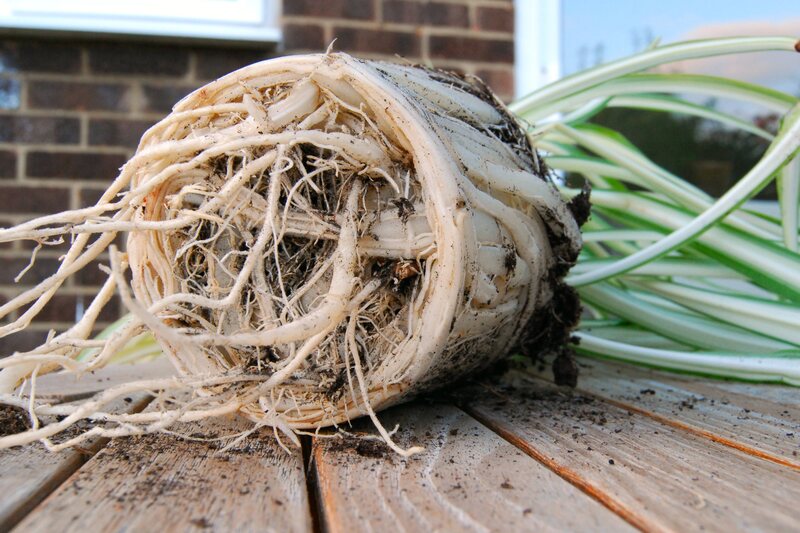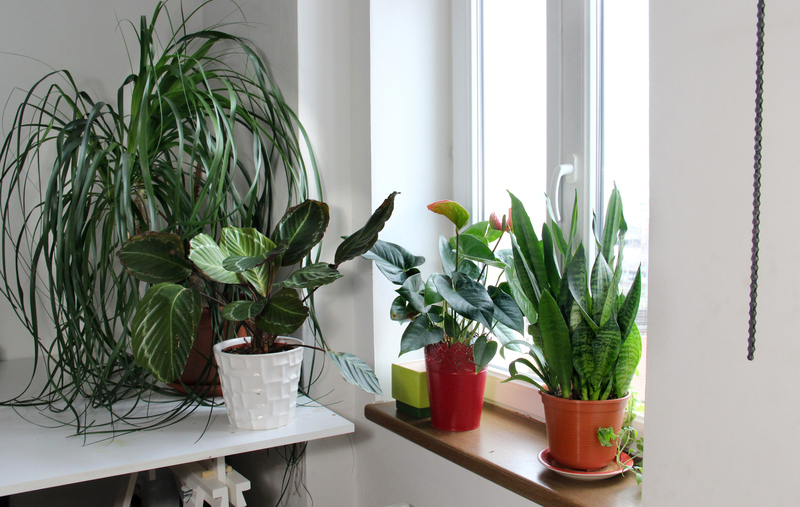Evergreen Climbers for Shade: Bringing Life to Hidden Corners
Posted on 20/05/2025
Are the shaded corners of your garden or outdoor space looking dull and lifeless? You're not alone. Many gardeners face the challenge of transforming these shaded, often overlooked areas into green sanctuaries. Thankfully, with evergreen climbers for shade, you can turn even the gloomiest corners into vibrant, living focal points all year round.
Why Choose Evergreen Climbers for Shady Areas?
Planting evergreen climbing plants for shade offers multiple benefits, both aesthetic and practical:
- All-year coverage: These climbers retain their foliage all year long, ensuring your fences, walls, or pergolas stay lush and green, even in winter.
- Low maintenance: Most shade-loving climbers are resilient and easy to grow, requiring minimal effort after initial establishment.
- Wildlife benefits: Evergreen climbers provide shelter and food for birds and beneficial insects.
- Screening and privacy: Use climbers to screen unsightly areas, add privacy, or even mask a dull wall or fence.
- Versatile design elements: With their variety of leaf textures and shades, evergreen climbing plants for partial shade can complement virtually any garden style, from cottage to contemporary.
Understanding Shade: What Do Evergreen Climbers Need?
Before choosing your evergreen climbing plants for shade, it's important to understand the nature of shaded spots:
- Light shade: Receives a few hours of filtered sunlight a day.
- Dappled shade: Light filters through tree leaves; changes throughout the day.
- Deep shade: Almost no direct sunlight. Under large trees or along north-facing walls.
Most shade tolerant evergreen climbers prefer either light or dappled shade, but some hardy varieties can handle deeper shade. Always check individual plant requirements before planting.

Top Evergreen Climbing Plants for Shaded Gardens
Let's explore some of the best evergreen climbers for shaded corners that will add beauty and vitality to any neglected spot:
1. Hedera helix (English Ivy)
- Hardiness: USDA zones 4-9, very hardy and adaptable.
- Features: This classic climber tolerates deep shade better than almost any other, providing dense cover with its glossy, variably shaped leaves.
- Uses: Great for walls, fences, groundcover, or even under trees.
Tip: However, English Ivy can be vigorous and even invasive. Regular pruning keeps it under control.
2. Trachelospermum jasminoides (Star Jasmine)
- Hardiness: USDA zones 8-10.
- Features: With lustrous dark green leaves and clusters of highly fragrant white flowers in early summer, this is a standout choice for shaded patios.
- Uses: Ideal for walls, trellises, and containers in sheltered corners.
3. Lonicera japonica 'Halliana' (Japanese Honeysuckle)
- Hardiness: USDA zones 4-9.
- Features: Semi-evergreen in cooler areas but reliably evergreen in mild climates. Produces sweetly scented, creamy-yellow flowers from late spring to fall.
- Uses: Great for covering unsightly structures, fences, or letting it scramble over low walls.
4. Pyracantha (Firethorn)
- Hardiness: USDA zones 6-9.
- Features: Not a true climber, but a wall shrub that can be trained against shady walls. Evergreen, spiny, and covered in orange, red, or yellow berries in autumn which attract birds.
- Uses: Attractive on walls, fences, or as a barrier with bonus wildlife appeal.
5. Clematis armandii
- Hardiness: USDA zones 7-9.
- Features: A handsome, early-flowering climber with glossy, leathery leaves. Produces a mass of scented, star-shaped white flowers in early spring.
- Uses: Training up trellises or fences in partial shade for a splash of spring beauty.
6. Euonymus fortunei 'Silver Queen'
- Hardiness: USDA zones 5-9.
- Features: Can be used as a sprawling climber or ground cover. Offers variegated leaves that brighten dark areas throughout the year.
- Uses: Great for small garden spaces or where color contrast is needed in shade.
7. Fatshedera lizei (Tree Ivy)
- Hardiness: USDA zones 8-11.
- Features: A cross between Fatsia and Hedera, this bold-leaved climber can tolerate deep shade and brings a tropical look with dramatic foliage.
- Uses: Suitable for walls, fences, or allowed to ramble through large shrubs.
Design Tips: Incorporating Evergreen Climbers in Shady Corners
Bringing life to hidden spaces is more than just planting; it requires some thoughtful design:
Choose the Right Support
- Trellises: Ideal for lightweight climbers like star jasmine or clematis.
- Wires or netting: Robust climbers like ivy or honeysuckle can twine through wires attached to walls.
- Pergolas or archways: These structures, often shaded, are perfect for displaying the lush foliage of evergreen climbers overhead.
Layer with Underplanting
- Mix shade-loving perennials or ground covers at the base of your climbers for a layered, woodland effect. Think hostas, ferns, or heucheras alongside your shade-tolerant evergreen climbers.
Use Variegated Foliage
Variegated leaves (such as in Euonymus fortunei) reflect light and brighten dim spaces, creating a magical effect particularly in more heavily shaded areas.
Play with Height and Texture
- Allow climbing plants to scramble up into small trees, mix with hanging baskets, or grow across garden sculptures for added drama.
Planting and Care: Making Evergreen Climbers Thrive in Shade
Soil Preparation and Planting
- Improve soil: Shaded areas often have poor, dry, or compacted soil--enrich with organic matter like compost before planting.
- Plant at the right depth: Most climbers prefer to be planted at the same level as they were in the pot. For clematis, plant slightly deeper to protect from wilt.
- Water well: Initial watering is crucial. Check that the roots don't dry out in the first year, especially if tree roots compete for moisture.
Ongoing Maintenance
- Mulch: Apply a thick mulch every spring to conserve moisture and boost fertility.
- Pruning: Trim back climbers after flowering to maintain their shape and prevent overgrowth. This also encourages bushier growth.
- Feeding: A general slow-release fertilizer each spring supports healthy, evergreen leaves and vigorous growth.
Common Problems with Evergreen Climbers in Shade
- Leggy growth: Insufficient light can lead to sparse, straggly stems. Prune to encourage side shoots and consider selective thinning of overhanging branches to let in more dappled light.
- Pests: Watch for aphids, spider mites, and scale on tender new growth. Wildlife-friendly pest controls are best!
- Poor flowering: Some climbers flower less in deep shade. Prioritize foliage interest or choose lightly shaded locations for flowering types.
Evergreen Climbing Plants for Shade Indoors & on Balconies
Don't have a garden? You can bring year-round greenery to shaded balconies or even inside your home:
- Climbing houseplants: Try English Ivy or Philodendron varieties in low-light indoor spaces for similar evergreen effects.
- Shady balconies: Smaller varieties of star jasmine, clematis, or evergreen honeysuckle thrive in large containers with some shade and shelter.
- Vertical gardening: Use wall planters or hanging pockets for trailing climbers indoors, creating a living wall effect.
Best Practices for Sustainable, Wildlife-Friendly Shade Gardens
- Native choices: Where possible, opt for native evergreen vines for shade, which are better adapted to your local climate and support native fauna.
- Water wisely: Although established climbers are resilient, grouping thirsty plants together and mulching reduces the need for frequent watering.
- Encourage birds & pollinators: Varieties with berries or fragrant flowers (like Lonicera or Pyracantha) are especially beneficial for wildlife.

Summary: Transform Hidden Corners with Evergreen Climbing Plants for Shade
Don't let shady corners go to waste! With the right evergreen climbers for shade, you can transform dull, hidden garden spaces into vibrant, living walls of green that bring life throughout all seasons. Whether you have a north-facing wall, a shadowy pergola, or an indoor nook crying out for freshness--there's an evergreen climber perfectly suited for the job. Choose species matched to your local climate and specific light conditions, prepare your soil well, and enjoy the lush beauty of year-round foliage even in the shadiest spaces.
Frequently Asked Questions
- What is the best evergreen climber for deep shade?
English Ivy (Hedera helix) is exceptionally tolerant of deep shade and provides dense coverage quickly. - Can evergreen climbers damage brickwork or fences?
Some, like ivy, can cling tightly and may damage weak or crumbling mortar. Use supports to keep climbers slightly away from vulnerable surfaces. - How do I train climbers in shady spots?
Use trellises, wires, or mesh to guide new shoots. Pinch out growing tips to encourage bushiness and coverage. - Do evergreen climbers need much pruning?
Most benefit from light trims after flowering or late winter to keep them tidy and full.
Start Your Shaded Garden Transformation Today!
By embracing evergreen climbing plants for shade, you can breathe new life into hidden corners, crafting an inviting, ever-green paradise--whatever the season. Explore the vast selection, plan your design, and watch your shaded spaces burst with texture, structure, and vitality all year round. You'll not only enjoy a more beautiful garden but will also provide crucial habitats for garden wildlife.
Ready to get started? Choose your favorite climber, prepare your shady corner, and experience how even the darkest space can become the highlight of your garden with the magic of evergreen climbers!

